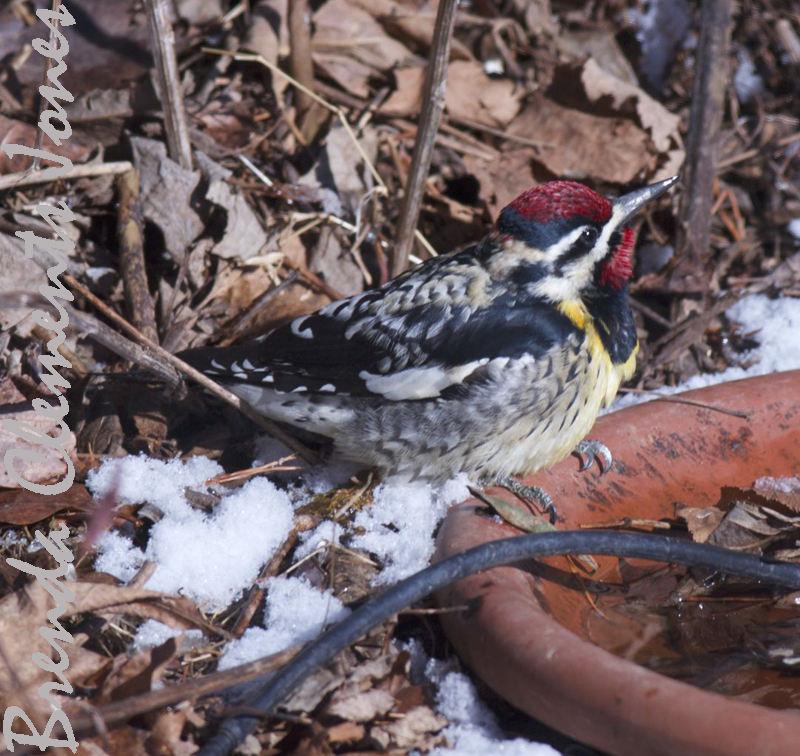
Beautiful patterns, holes in tree bark, looking like a sort of Morse Code, is not the work of Martians leaving us a message, or wood boring insects. These holes are the work of a brightly colored, medium sized woodpecker, the Yellow-bellied Sapsucker, Sphyrapicus varius. The photo, above, is a cluster of holes (called sapwells) that I discovered less than a week ago, in an apple tree in front of my cabin. The picture, below, is lines of sapwells in an Eastern Red Cedar. Ruby-throated Hummingbirds are attracted to sapwells, and will drink the sap that the Sapsucker has inadvertently provided for them. The Sapsucker watches for such things, and will chase the mooching hummingbird away.
The Yellow-bellied Sapsucker, during early spring, tests and selects trees that will be the source of food during the coming season. The Sapsucker will consume the sap, and insects, that occasionally get trapped in the sap, coming back many times a day. The same tree may be a source of food for a Sapsucker and his mate, for several years.
If you are concerned about a special tree that is decorated with these sapwells, you might try wrapping the trunk of the tree with hardware cloth, or burlap.
The picture, above, is a male (left) and female (right) Yellow-bellied Sapsucker during a snow storm, last year in my woods. A pair will stay together during the nesting season to raise their young together. Often they will reunite after migrating, sometimes even returning to the same nesting area.
The picture, above, is a male Yellow-bellied Sapsucker.
Sapsuckers are not normally found at backyard feeders, although occasionally they might be found at suet. In the very coldest days of the winter, here in the Blue Ridge Mountains, of central Virginia, I will see Sapsuckers at my water warmer.
A female Yellow-bellied Sapsucker in the picture above.
Both the female and the male share duties, of incubation of their eggs, and feeding of the young, once they are hatched. The eggs hatch in 12 to 13 days. The babies are fed insects, sap, and fruit. Nestlings leave the nest 25 to 29 days after emerging from their eggs, and are fed by their parents for 10 days after leaving the nest. There is one brood per year.
And in the photo, above, a confused Sapsucker? I don’t have an answer. This is not an unusual sight. I’ve captured Sapsuckers in photographs on this utility pole many times. Obviously this little lady would not find any sap flowing. Perhaps she is using the pole as a communication device, as she tap, tap, taps?





